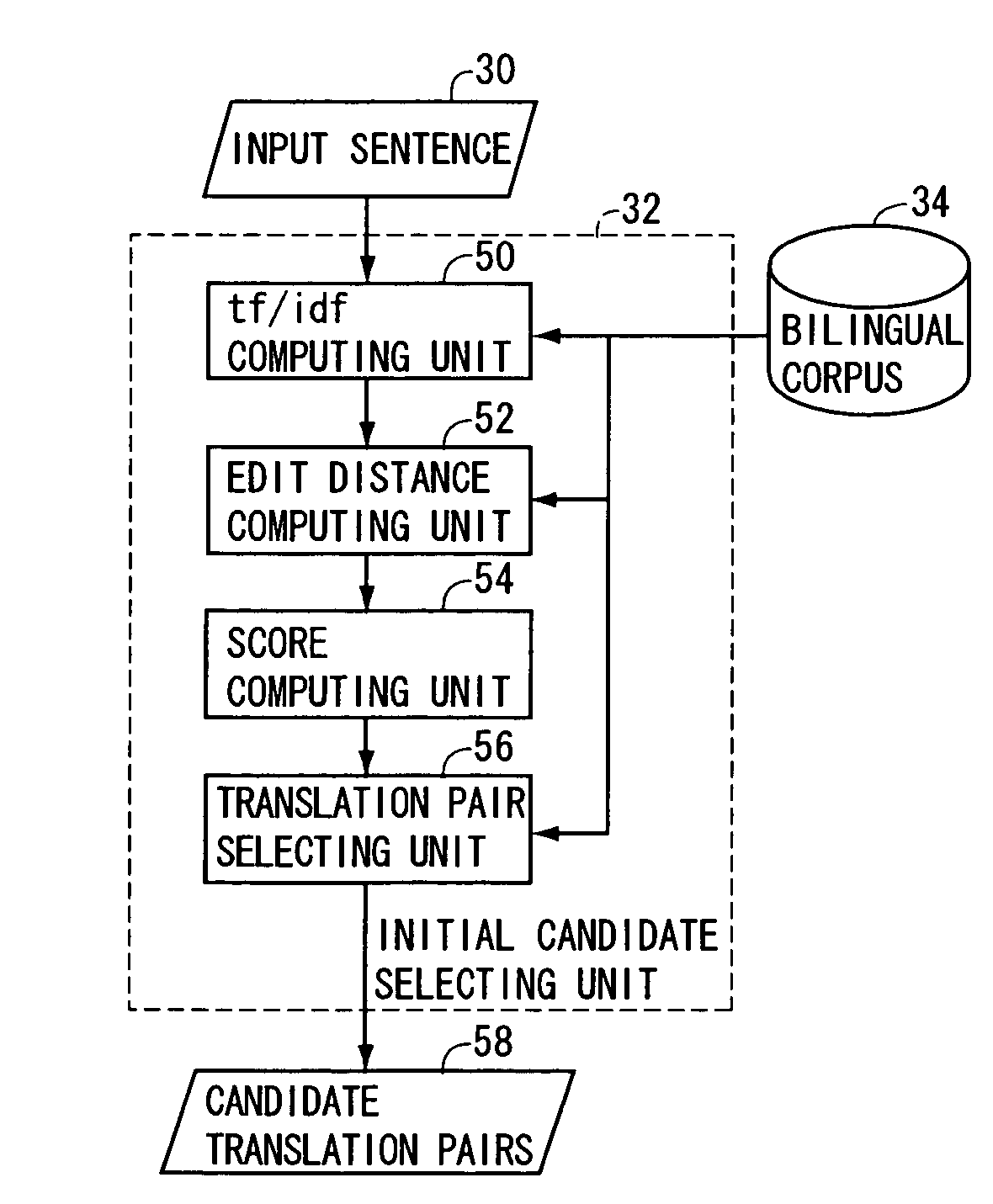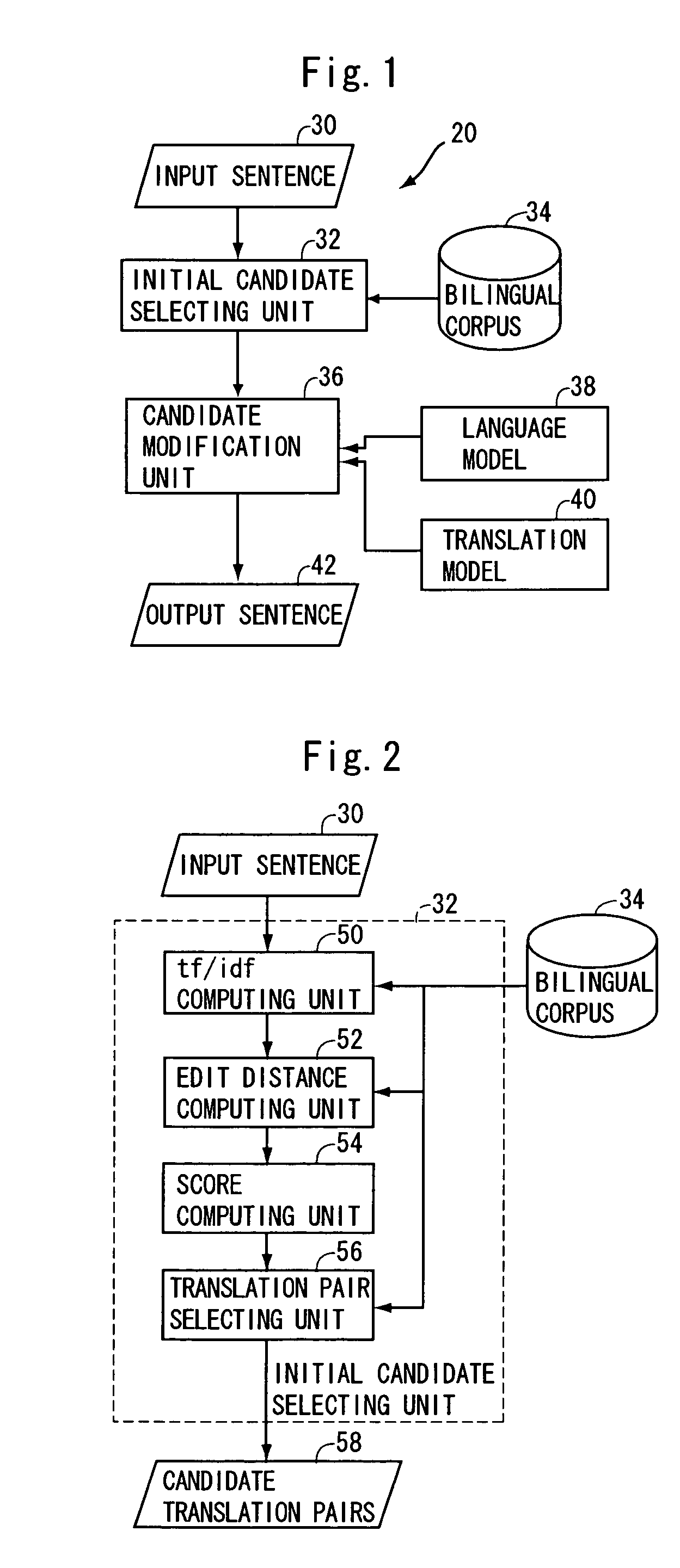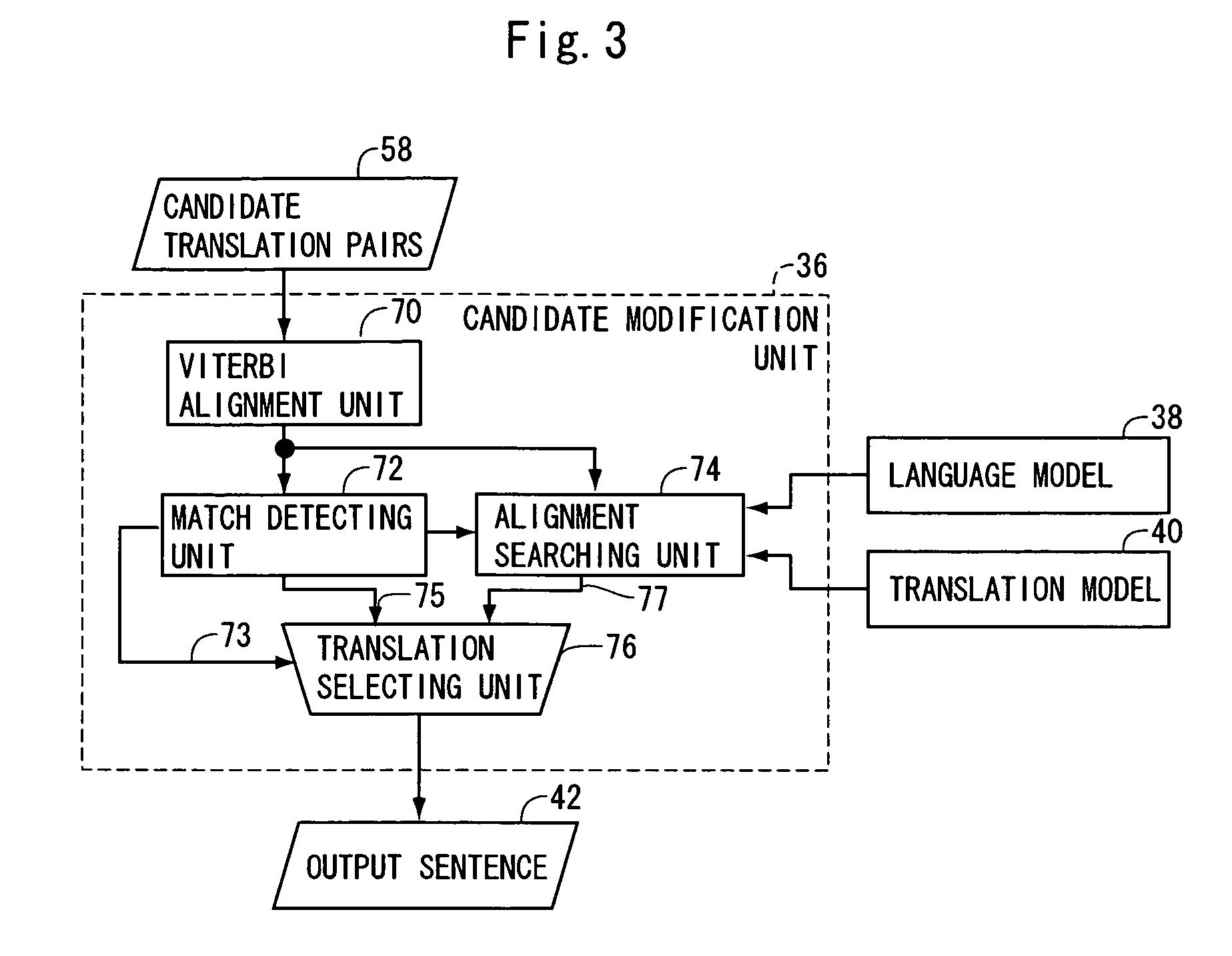Machine translation apparatus and machine translation computer program
a machine translation and computer program technology, applied in the field of machine translation apparatuses, can solve the problems of complicated word alignment, suboptimal (limited/local) solutions, and little success of the translation model applied to drastically different language pairs, and achieve the effect of high-quality translation regardless of language combinations
- Summary
- Abstract
- Description
- Claims
- Application Information
AI Technical Summary
Benefits of technology
Problems solved by technology
Method used
Image
Examples
Embodiment Construction
[0053]An example-based translation has been known as a machine translation system different from the word-by-word translation system such as seen in beam search strategies. The example-based translation is one of the translation methods based on bilingual corpus. The bilingual corpus contains a large number of translation pairs consisting of sentences of a first language and their translations of a second language. Given an input sentence of the first language, a sentence of the first language similar to the input sentence is searched out from the bilingual corpus, and based on the translation (second language) of the thus searched out sentence of the first language, an output sentence is formed.
[0054]The machine translation system in accordance with the present embodiment provides a new framework combining the example-based translation system and the statistical machine translation system.
[0055]—Configuration—
[0056]FIG. 1 is a block diagram of a machine translation system 20 in acc...
PUM
 Login to View More
Login to View More Abstract
Description
Claims
Application Information
 Login to View More
Login to View More - R&D
- Intellectual Property
- Life Sciences
- Materials
- Tech Scout
- Unparalleled Data Quality
- Higher Quality Content
- 60% Fewer Hallucinations
Browse by: Latest US Patents, China's latest patents, Technical Efficacy Thesaurus, Application Domain, Technology Topic, Popular Technical Reports.
© 2025 PatSnap. All rights reserved.Legal|Privacy policy|Modern Slavery Act Transparency Statement|Sitemap|About US| Contact US: help@patsnap.com



